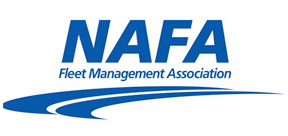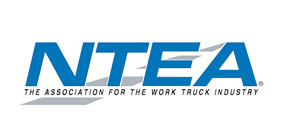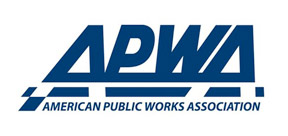Decades-long revitalization breathes new life into old mill city

Nestled on the border with Rhode Island, an hour’s drive from the state capital of Boston, Mass., Fall River is a mill town from a bygone era. Possibly most infamous as the home of Lizzie Borden, accused of murdering her father and stepmother with an ax, Fall River has also produced celebrities such as chef Emeril Lagasse and TV news journalists Morton Dean and George Stephanopoulos.
Unfortunately, the city fell into decline as the textile mills that once made up its economic lifeblood began closing in the years following World War I. It even filed for bankruptcy many years ago.
However, leaders in Fall River have taken steps toward revitalization, using the resources and buildings available to breathe new life into this town of 90,000 people. Kenneth Fiola Jr. of Bristol County Economic Development Consultants has been involved in the project since 1988.
“The beauty of our agency is that we’re an independent agency, but we’re comprised of community leaders – bank presidents, educational leaders, businessmen and women, civic activists,” Fiola noted.
The firm has provided services to Fall River for a decade prior to Fiola’s time there – exceeding 40 years and an estimated 12 different mayoral administrations. This has allowed for a consistency in economic development since 1978, he said.
The city’s location on the eastern shore of Mount Hope Bay, at the mouth of the Taunton River, provides a unique opportunity to attract jobs and residents. Mayor Paul Coogan, now in his fifth year leading the municipality, spoke about its prime placement.
“We have a great location; we’re 15 minutes from the ocean, an hour to Cape Cod, half hour to Newport, 20 minutes to Providence, so people do like our location,” he said proudly.
From its early days, Fall River relied on the water for industry. Starting in the late 1800s, it maintained an extremely popular steamship line that connected New York City to Boston and places in between. The Fall River Line shut down during the Great Depression.
The waterfront is breathing new life into the city. Fiola noted that “you can’t make water,” but “people are again gravitating toward waterfront communities.”

“We figured the waterfront could be a big asset to us, so we thought to recapture it.”
He spoke about the difficulty in reclaiming the natural resource. An elevated highway cut off the riverfront from the rest of the city, making travel between Providence, R.I., and Boston much more efficient but reducing access to the waterfront.
Fiola reported that the BCEDC worked with Fall River to build two new industrial parks and put forth plans for waterfront revitalization.
In the early 2000s, a study determined that the city would do well to eliminate the elevated highway and remove many of the spaghetti ramps connecting roadways to that highway. The study estimated that the project would take 20 years, a number Fiola originally scoffed at. He quickly realized that securing the funding alone would take years.
Removing the highway took $130 million, and the connection ramps another $270 million, both from state and federal funding. The changes to the highway system opened 22 acres of developable land, creating 61,000 square feet of commercial retail and restaurant space and adding 2,200 parking spaces overall. The waterfront now boasts the Fall River Heritage State Park, with a mile-long boardwalk, Battleship Cove and the historic Lincoln Park Carousel.
Additionally, the whole eastern half of the city is part of an enormous bioreserve. “It’s just amazing that half of our city is part of a 16,000-acre tract of land that’s preserving water,” said Sarah Page, executive director of the Fall River redevelopment authority. It also contains a 20-mile hiking trail.
Senator Thomas Norton City Pier was acquired years ago by the redevelopment authority because the land around it was contaminated with polychlorinated biphenyls, or PCBs. To reclaim the land, the contaminated soil had to be removed and capped. The area is now a 3½-acre open space with walking paths along the edge of the water, a pier that stretches into the Taunton River and a dock that can accommodate 15 boats.
Page stated that the area has become “a real event space” for things like a family-friendly kite flying day and food trucks.
This June, the project received the Brownfields-Remediation Project of the Year award from the Environmental Business Council of New England, an honor given to a Superfund site that serves as an example of excellence in overcoming the challenges involved in the remediation process.
Another critical aspect of the waterfront study was the reestablishment of a 52-mile rail line between Fall River and Boston to decrease travel time to the capital city. On March 24 the South Coast Rail Project reconnected Fall River, Taunton and New Bedford to Boston after more than 50 years. The project cost $1 billion and saw its own setbacks.
“From the early 2000s to now, we spent a lot of time advocating for securing funding to move these projects forward,” Fiola said.

During that time, local government saw many changes in leadership.
“Keeping everybody moving in one direction over the course of 15 or 20 years was not easy, but we were able to do it.”
He hopes to see the improvements to his hometown draw younger populations to Fall River. By repurposing roughly 12 old mill buildings scattered throughout the city, 1,450 apartments have been added.
“The workmanship in these mill buildings is phenomenal,” Fiola stated. He pointed out that the hardwood floors and other reclaimed features are ones that could not be replicated today.
He called the rehabbed mills-turned-apartments “major components” of the neighborhoods in which they stand, increasing property values as well as preserving the historic buildings. Fiola estimated that roughly $4 million in private investments accompanied the money the city put into those properties. As soon as apartments are available, they become waitlisted, demonstrating the demand for living space in Fall River.
According to Fiola, most residents of the city are generational.
“As much as we’re a city, we’re like a big town. Family relations go back generations.”
Over the years, high populations of Portuguese immigrants settled in Fall River to work in textile mills that had transitioned to clothing manufacturing, bringing other family members over to earn a moderate living. Even that industry ran its course, though, leaving workers with few jobs that met their skill sets.
With the downturn of manufacturing jobs – down to less than 4,000 today from 21,000 in the 1990s – the city learned to diversify its job offerings to bring in new residents, focusing on sectors like healthcare, distribution and entertainment. Amazon placed a distribution center in the Fall River Industrial Park, adding many more opportunities. Additionally, the commuter railway makes it easier for young professionals to work in Boston but still enjoy a less expensive and more low-key lifestyle outside the big city.
“The end goal,” according to Coogan, “is to promote economic development so people who come to Fall River can work in Fall River, can shop in Fall River, go to school in Fall River and live in Fall River.”
For Fiola, the work has been a lifelong mission.
“The nice thing about it is, I can walk around the city and see, touch and feel projects that I’ve been involved in that have made a positive difference in the community. It’s the whole gamut – we’ve run from the industrial-commercial side of development to the residential side. It’s a real, holistic approach to economic development.”
“I think there is a resurgence in Fall River that’s going to continue to grow,” he said. “It’s all coming together.” There were some dark days with the mill closures, but things are looking brighter on the southeast coast of Massachusetts.
Asked about when the redevelopment will be complete, Coogan replied, “I don’t think there’s an end date per se. Being in a city, you just keep trying to improve things to make the city a better place to live. I don’t know if there’s ever a date when everything’s done.”
Next Article: Rolling along: Why Tableted Chlorine is Ideal for Remote Booster Stations and Wells





